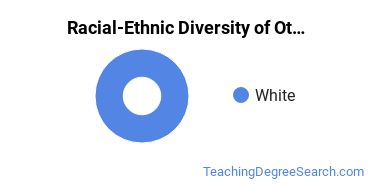Other Education at The University of the Arts
What traits are you looking for in a other education school? To help you decide if The University of the Arts is right for you, we've gathered the following information about the school's other education program.UArts is located in Philadelphia, Pennsylvania and approximately 1,530 students attend the school each year.
Want to know more about the career opportunities in this field? Check out the Careers in Other Education section at the bottom of this page.
UArts Other Education Degrees Available
- Master’s Degree in Other Education
UArts Other Education Rankings
Other Education Student Demographics at UArts
Take a look at the following statistics related to the make-up of the other education majors at The University of the Arts.
UArts Other Education Master’s Program

In the other education master's program at this school, racial-ethnic minorities make up 50% of degree recipients. That is 13% better than the national average.*
The following table and chart show the race/ethnicity for students who recently graduated from The University of the Arts with a master's in other education.

| Race/Ethnicity | Number of Students |
|---|---|
| Asian | 0 |
| Black or African American | 0 |
| Hispanic or Latino | 1 |
| White | 1 |
| International Students | 0 |
| Other Races/Ethnicities | 0 |
Concentrations Within Other Education
Other Education majors may want to concentrate their studies in one of these areas. The table shows all degrees awarded in this field awarded for all degree levels at The University of the Arts. A concentration may not be available for your level.
| Concentration | Annual Degrees Awarded |
|---|---|
| Other Education | 1 |
Related Majors
References
*The racial-ethnic minorities count is calculated by taking the total number of students and subtracting white students, international students, and students whose race/ethnicity was unknown. This number is then divided by the total number of students at the school to obtain the racial-ethnic minorities percentage.
- College Factual
- National Center for Education Statistics
- O*NET Online
- Image Credit: By Beyond My Ken under License
More about our data sources and methodologies.
